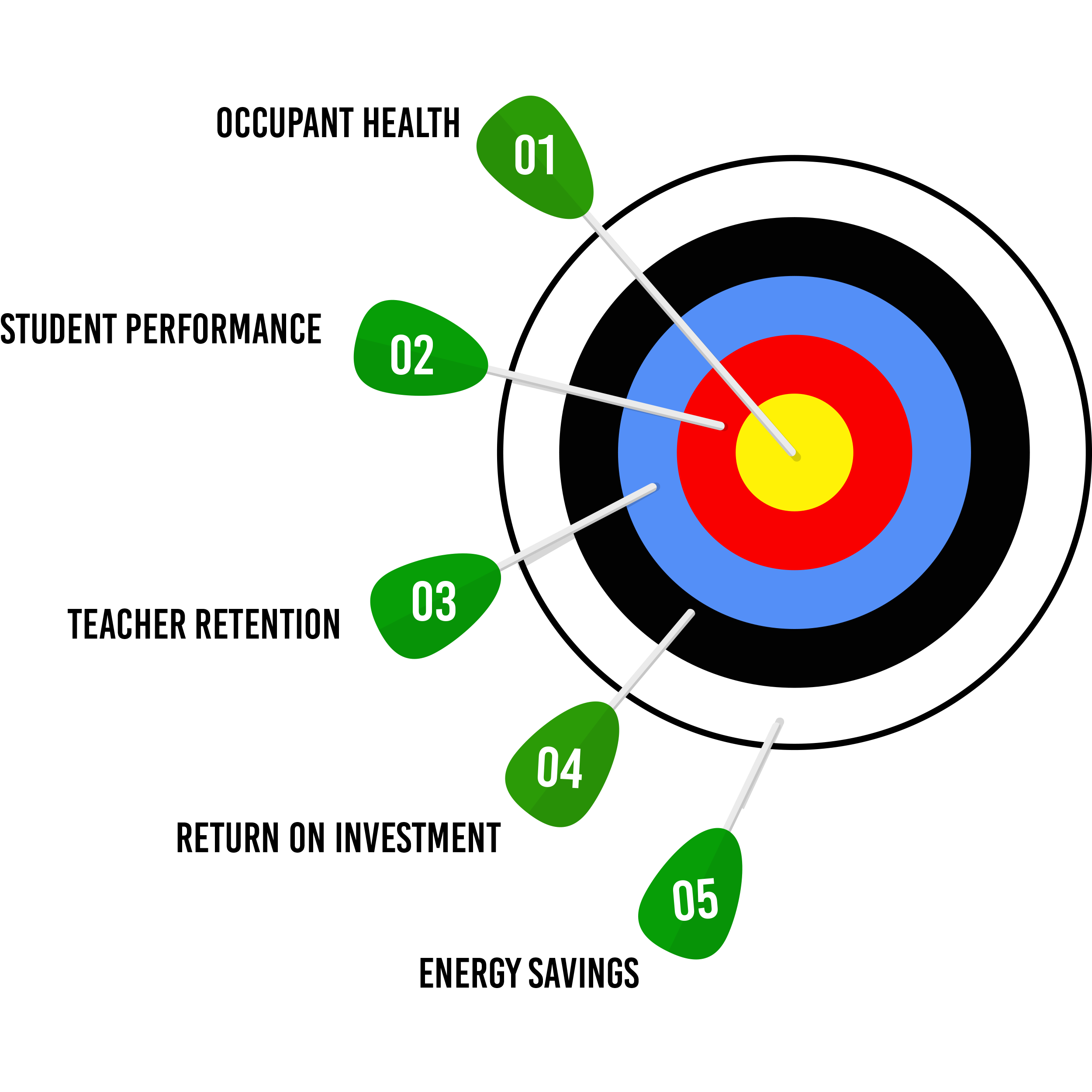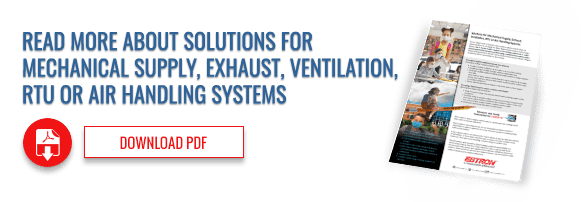Sick Building Syndrome (SBS) symptoms have been widely reported by occupants in schools. SBS symptoms are acute symptoms, such as headache, fatigue, cough, and tight chest, and irritation of the eyes, nose, and throat. Initial exposure to SBS would have these symptoms improving when away from school. Long term exposure to indoor pollutants causing SBS may lead to lasting symptoms.

Schools are the places where children spend most of their time during their childhood, other than their homes.
Children are more vulnerable to adverse Indoor Environmental Quality (IEQ) due to having a more rapid breathing rate when compared to adults, and also to their still-growing body and still-developing organs. Long term exposure may increase absenteeism rate, which may become a financial burden for parents and school systems. SBS symptoms in school and reoccurring absenteeism may impact student academic performance.
WHAT MAKES A BUILDING SICK?
_____
Buildings become sick through a variety of circumstances that create poor Indoor Air Quality (IAQ) or IEQ. IAQ focuses on pollutants in the air, where IEQ includes these pollutants and temperature, humidity, acoustics, and lighting. SBS is an all-encompassing term that identifies a building with conditions that cause reoccurring acute symptoms. Most often the conditions are due to low ventilation rates and a build-up of indoor pollutants. The pollutant source may not originate within the building, however there is a direct relationship between ventilation, filtration, and the airflows within the building to the location and amount of pollutant.
There may be more than one contaminant that causes symptoms, multiple contaminants that result in different symptoms, and individuals that react differently to one or more of the contaminants. Additionally, symptoms may only be experienced in one location of a school. If the source is not identified and corrective actions not taken, there is the potential to further spread to other locations. The airflows within the building can determine the pathway of the pollutant.
Temperature and humidity not only affect an individual’s comfort, but may stress the body, or may create conditions where the contaminant thrives. There is a growing concern that the body’s respiratory system has less defense in lower humidity conditions. Ideally the relative humidity (RH) for a healthy building is between 40-60% RH. Higher RH supports the development, growth, and spread of mold. Lower RH enhance the ability for a virus to survive. Research shows that influenza can thrive in low RH environments. School flu has been known to spread quickly, and has similarities to the spread of COVID-19.
The contaminants causing SBS may not be out of the ordinary for a school, however the impact to the occupants are enhanced if the ventilation rates are low. Yesterday’s ventilation rates may not meet today’s needs as societal and technological evolutions introduce new products into schools that weren’t there in the recent past. These products tend to have more man-made components, which introduce new and increased off-gassing of byproducts into the indoor space. More time is spent indoors than in previous generations, increasing exposure to many contaminants.


TARGET WHAT IS MOST IMPORTANT
_____
SBS may be more prevalent in schools due to the evidence that schools are under-ventilated. SBS impacts all building occupants: students, teachers, and other school professionals. A study in Finland linked student perception of IAQ to teacher sick leave. When the IAQ was consistently poor, sick leave was greater; as IAQ improved, sick leave decreased. In NY, teachers self reported classroom related IAQ concerns that correlated to reported symptoms of: sinus problems (16.8%), headache (15.0%), allergies/congestion (14.8%), and throat irritation (14.6%).
Salaries and benefits are by far the number one expense in schools. It is also typical that schools are funded according to the number of students attending schools and that student absenteeism counts against this funding. If teachers and students had less absent days, it would be expected to result in both a financial and educational benefit. A study in CA found that increasing under-ventilation rates to the minimum standard would net a 3.4% improvement in student attendance. The additional funding for attending students was estimated at 8X the increased energy cost. Furthermore, it was estimated that doubling the minimum standard ventilation rate would reduce absenteeism 11-17%. Another study in TX found doubling the ventilation rate in each classroom would result in one less school flu case per classroom, resulting in positive financial outcomes.
Providing the correct amount ventilation, benefits student performance and the health of all school occupants! Enhancing ventilation rates beyond minimums, is an available tool to assist with achieving higher performing schools. Ventilation should be viewed as an investment and not an expense. Instead of trying to save pennies using strategies such as demand control ventilation (DCV), an additional investment can reap several times more in reward.
VENTILATION IS FUNDAMENTAL
_____
Ventilation is necessary for a healthy and high performing school. Ensuring at least the minimum ventilation rates, proper airflow paths, and proper airflow building pressurization, is important to minimizing the potential for SBS. Enhanced ventilation not only makes all occupants safer from the flu and other viruses, but it also can create a more effective learning environment. However, the school building must be treated as a dynamic system. One can’t just open a damper or windows and expect all is good. There is cause and effect to every change. These changes should be actively monitored and controlled to ensure SBS conditions are not created. Airflow control by itself cannot prevent pollutants, however it is key to establishing healthy building conditions. Learn more about Ebtron Solutions for Schools.

The Elementary and Secondary School Emergency Relief Fund (ESSERII) and the American Rescue Plan Act of 2021 allows for LEAs to use available funds for improvements, repairs, and upgrades to mechanical ventilation and control systems. Ventilation control is important sick school prevention function.
Additional Resources Related to Ventilation for Healthy Schools
_____
The Lancet COVID-19 Commission
In addition to decreased airborne infectious disease transmission, research shows that ventilation and air cleaning improvements are likely to lead to improved academic performance, fewer missed school days for students, higher scores on cognitive function tests, and many benefits for teachers including decreased respiratory symptoms, increased teacher retention, and improved morale.
Safe Work, Safe School, and Safe Travel
Lawrence Berkeley National Laboratory
Overall, the available research indicates that increased ventilation rates in classrooms are associated with reduced student absence.
Building Ventilation
Environmental Protection Agency
The health and comfort of students and teachers are among the many factors that contribute to learning and productivity in the classroom, which in turn affect performance and achievement. Providing a healthy, comfortable environment is an investment in your students and staff.





